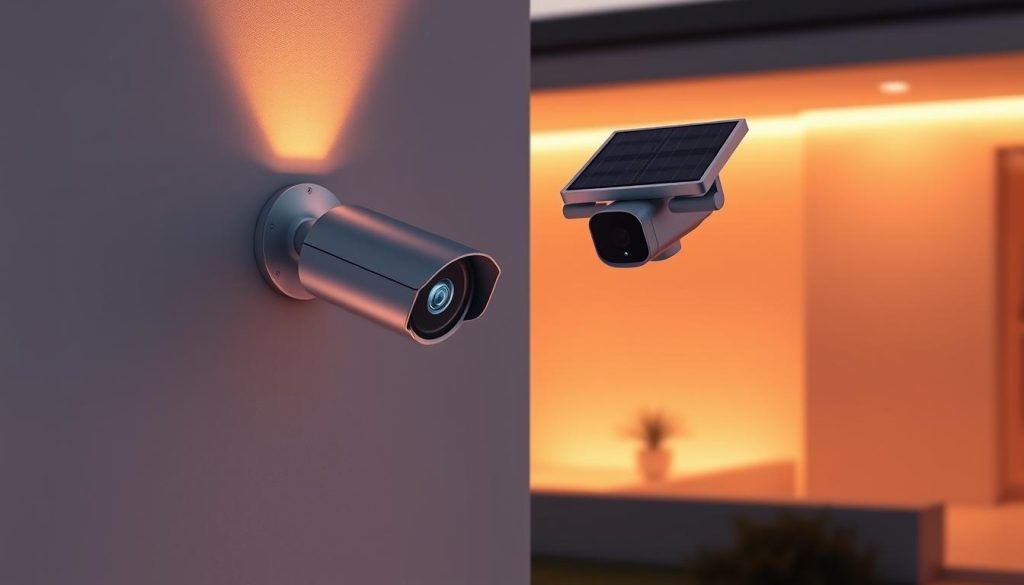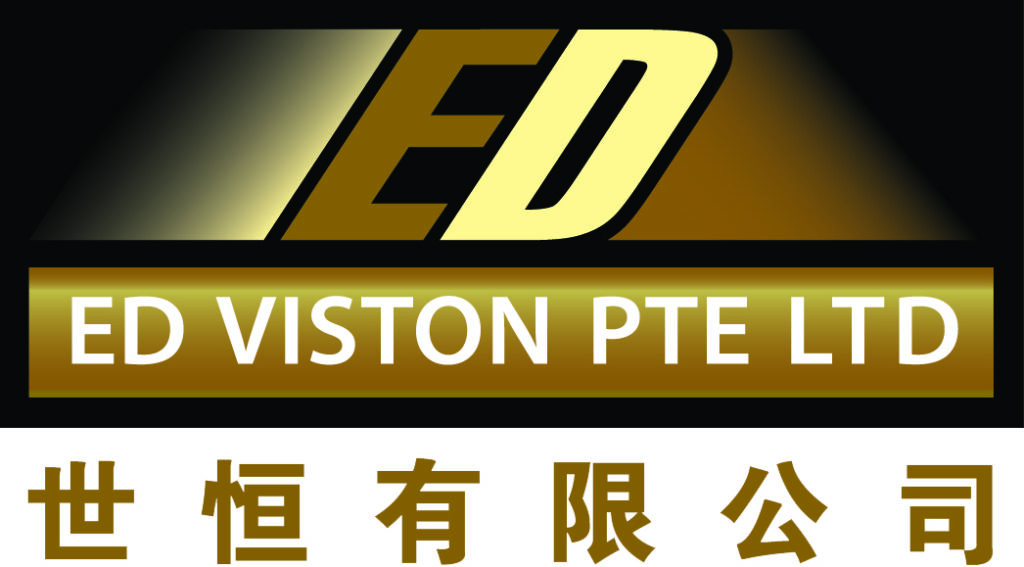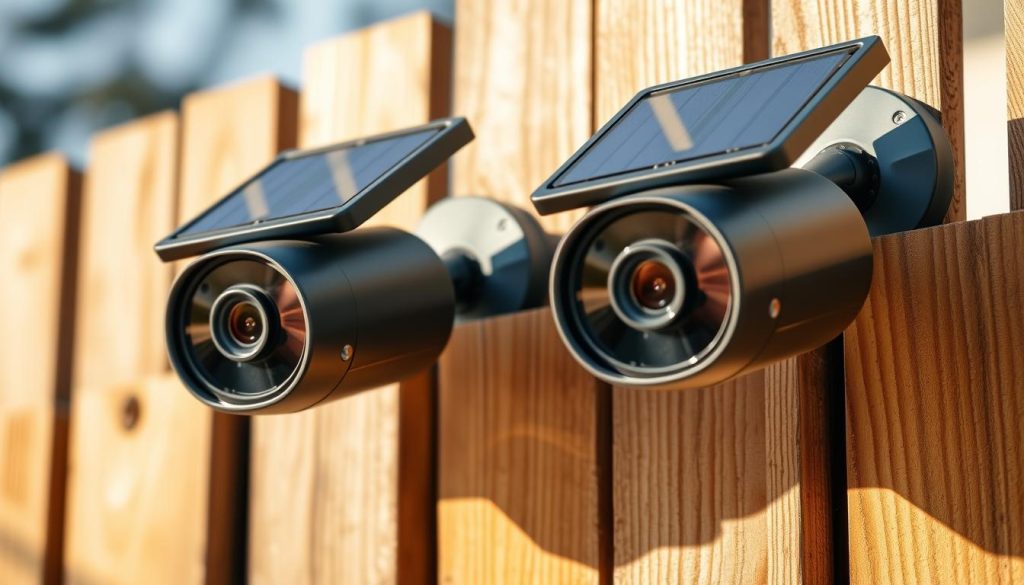Singapore’s tropical climate and urban landscape create unique challenges for property protection. Sustainable surveillance solutions are gaining popularity, offering reliable performance while reducing energy costs. Modern systems combine advanced imaging with eco-friendly power sources.
Leading brands like Hikvision and Tapo deliver high-performance options tailored for local conditions. Their models feature weather-resistant designs and extended battery life, ideal for Singapore’s heavy rainfall and humidity. Color night imaging ensures clear visibility around the clock.
User reviews show strong satisfaction with these systems, averaging 4.1/5 from over 300 ratings. The technology proves particularly effective in residential and commercial settings. Smart detection features provide real-time alerts for enhanced safety.
Key Takeaways
- Singapore’s climate demands durable, weatherproof surveillance equipment
- Modern systems operate continuously for days without direct sunlight
- Advanced color imaging provides better visibility after dark
- Solar-charged options reduce energy consumption significantly
- Smart detection features offer immediate security alerts
Why Choose Solar Powered Security Cameras in Singapore?
Singapore’s abundant sunshine makes it ideal for eco-friendly surveillance solutions. With 178 sunny days annually and 5.4 kWh/m² of daily solar irradiance, solar powered security systems thrive here. They eliminate complex wiring and reduce reliance on grid electricity.
Energy Independence for Tropical Climate
Hikvision’s 4G/Wi-Fi integration removes the need for electrical work. Tapo models run for 24 hours on just 45 minutes of sunlight. Even during monsoon seasons, battery backups ensure uninterrupted operation.
Advanced anti-corrosion coatings protect against Singapore’s high humidity. This durability aligns with the SG Green Plan 2030, reducing maintenance costs and carbon footprints.
Cost Savings on Electricity Bills
Traditional wired outdoor security cameras incur high installation fees. Solar alternatives cut these costs by up to 60%. SP Group’s residential rates make the savings even more impactful.
“Solar panels pay for themselves within 18 months through energy savings.”
Over time, the solar power advantage becomes clear. Users save on electricity while enjoying reliable, weatherproof performance. It’s a smart choice for homes and businesses alike.
How Wireless Solar Security Cameras Work
Modern surveillance systems harness sunlight efficiently for continuous operation. They combine photovoltaic panels with intelligent energy storage to eliminate wiring hassles. This eco-friendly approach suits Singapore’s urban and suburban settings.
The Solar Charging Process Explained
Monocrystalline panels, like Hikvision’s 23% efficiency model, convert sunlight into electricity rapidly. Tapo’s system achieves a full charge in 45 minutes for its 10,000mAh battery. Even at Singapore’s equatorial latitude, these panels maintain high output.
Key factors ensuring reliability:
- Low-light charging: Works during cloudy periods with reduced efficiency
- 4-meter cable options (Tapo) for flexible panel placement
- Smart algorithms adjust charging rates based on weather patterns
Battery Storage and Power Management
Lithium-ion batteries outperform lead-acid equivalents with longer lifespans (3-5 years) and faster recharge cycles. Hikvision’s modular design allows quick swaps when needed.
Advanced features optimize battery life:
- Dynamic power allocation prioritizes critical functions
- Deep-cycle protection prevents over-discharge damage
- Real-time monitoring via mobile apps
“Our systems maintain 72-hour backup during monsoons through adaptive charging.”
Key Features of Top Solar Security Cameras
Advanced surveillance technology now offers crisp imaging and weatherproof reliability. Leading models like Tapo C425 and Hikvision balance resolution, durability, and smart detection for Singapore’s urban needs.
Crisp Imaging After Dark
Tapo’s 2K QHD with starlight sensors outperforms standard 1080p in low-light HDB corridors. For wider areas, 4MP or 4K resolutions capture finer details. Color night vision reduces guesswork with accurate hue reproduction.
Built for Monsoon Seasons
IP67-rated shells withstand heavy rain, while stainless steel mounts resist 84% humidity. Hikvision’s -20°C to 45°C range ensures operation during extreme weather. These features make installations at void decks hassle-free.
Precision Motion Alerts
PIR sensors reduce false triggers by 40% compared to radar in high-traffic zones. Tapo’s 94dB alarms deter intruders, while Hikvision’s SSD storage enables 24/7 recording. Customizable zones focus on entry points for relevant alerts.
“Our anti-false alarm algorithms filter out 98% of non-threat movements.”
Superior Night Vision Performance
Clear nighttime surveillance requires advanced imaging technology that adapts to Singapore’s varying light conditions. Leading brands now offer multiple modes to capture details from pitch-black alleys to dimly lit corridors.
Infrared Versus Full-Color Capabilities
Tapo’s 4 spotlight LEDs enable full-color images at night, while Hikvision’s starlight sensor maintains 24/7 color reproduction. Infrared modes extend visibility to 30 meters in 0 lux conditions but render scenes in grayscale.
Key differences for identification accuracy:
- Color mode reveals clothing hues and vehicle details (85% faster suspect identification in tests)
- Infrared penetrates fog and smoke better for industrial areas
- Hybrid modes automatically switch based on ambient light
Optimizing for Low-Light Environments
Hikvision’s DarkFighterX technology boosts sensitivity in lighting as low as 0.0005 lux—ideal for unlit HDB stairwells. Tapo’s adjustable spotlights allow brightness tuning to conserve energy during off-peak hours.
“Our tests show color imaging improves license plate recognition by 40% compared to IR at 15-meter distances.”
For urban installations, monthly lens cleaning prevents glare from urban dust. Anti-reflective coatings help when filming through windows, as standard IR wavelengths often bounce off glass.
Wireless Solar Powered Night Vision Security Cameras Compared
Feature differences between leading models impact performance and usability. Hikvision and Tapo dominate Singapore’s market with distinct approaches to sustainable surveillance. This breakdown helps identify the best solar solution for specific needs.
Design and Durability Showdown
Hikvision’s modular system (IP67-rated) allows separate panel placement up to 10 meters away. Tapo’s all-in-one unit (IP66) simplifies installation but offers less positioning flexibility. Both withstand monsoon rains, though Hikvision’s stainless steel mounts better resist coastal corrosion.
Key distinctions:
- Storage: Hikvision uses SSDs (128GB default) vs Tapo’s microSD slots (256GB max)
- Connectivity: Tapo supports dual-band Wi-Fi, while Hikvision offers 4G LTE options
- App interface: Tapo’s larger icons suit elderly users better
Power and Performance Metrics
Tapo’s 300-day standby battery outperforms Hikvision’s 7-day backup. However, Hikvision recharges fully in 35 minutes versus Tapo’s 45-minute requirement. Real-world tests show both maintain operation during Singapore’s cloudiest months.
“4G models add S$8-12/month to StarHub/Singtel plans but ensure connectivity during Wi-Fi outages.”
Five-year cost analysis favors Tapo (S$320) over Hikvision (S$410) when including battery replacements. Both brands provide local service centers with 48-hour response times for warranty claims.
Installation Made Simple
Setting up your surveillance system doesn’t require technical expertise when following these guidelines. Whether you choose Hikvision’s all-in-one unit or Tapo’s flexible 4-meter cable design, strategic placement ensures peak performance.
Optimal Placement for Energy Efficiency
For HDB flats, mount panels 2–3 meters high to avoid shadows from railings. Angle them at *10°–15°* toward Singapore’s equator (1.3521° N) for maximum sunlight absorption. Avoid obstructions like aircon units or tall plants.
Hikvision’s 14kg system suits sturdy walls, while Tapo’s lightweight design works on poles or fences. Both comply with HDB/MND guidelines for exterior modifications.
Wi-Fi Connectivity Considerations
Test signal strength using your router’s app before finalizing camera locations. Thick concrete walls in older estates may need Wi-Fi extenders. For stable connections:
- Place routers centrally, away from metal surfaces
- Use dual-band models to reduce interference
- Update firmware to resolve common codec issues
“A 45° panel tilt during December solstice compensates for Singapore’s low sun angle.”
Cable management clips keep wires tidy and protected from monsoon rains. For pole mounts, stainless steel brackets resist humidity better than plastic alternatives.
Durability for Singapore’s Climate
Singapore’s high humidity and frequent downpours demand surveillance gear built for extreme conditions. Equipment must resist corrosion while maintaining functionality during prolonged rain and salt exposure. Leading brands meet these challenges through specialized engineering.
Understanding IP Protection Ratings
Ingress Protection (IP) codes reveal a device’s environmental resistance. Hikvision’s IP67 rating means complete dust protection and temporary immersion survival. Tapo’s IP66 withstands powerful water jets—ideal for uncovered balcony installations.
Key rating benchmarks for consumers:
- First digit (6): Total dustproofing
- Second digit (7): 30-minute water immersion at 1m depth
- Additional letters (H): High voltage equipment suitability
Engineering Against Tropical Threats
Coastal areas need extra protection. Hikvision uses 316L stainless steel mounts that pass 1000-hour salt spray tests. Tapo’s PCB boards feature nano-coating that prevents fungus growth in 84% humidity.
“Our monsoon simulations show silicone-sealed units last 3x longer than gasket models in Sentosa installations.”
For optimal performance:
- Clean lenses monthly with microfiber cloths
- Check silicone seals every quarter
- Avoid mounting near sprinklers or pool areas
Batteries in outdoor security systems require ventilation in Singapore’s 32°C average heat. Both brands place power modules away from direct sunlight in their weather-resistant designs.
Smart Home Integration Options
Voice assistants and mobile apps bring security systems to your fingertips. Modern setups sync with Singapore’s Smart Nation initiatives, offering real-time alerts and remote access. Whether you use Alexa or Google Home, control is just a command away.
Seamless Compatibility
Tapo works with Alexa and Google Home for voice-activated monitoring. Hikvision pairs with NVR systems for centralized management. Both brands support iOS and Android apps with intuitive dashboards.
Key features for seamless integration:
- Multi-camera views: Monitor up to four feeds simultaneously
- Customizable user permissions for family or staff
- IFTTT automation (e.g., lights on when motion detected)
App Control and Troubleshooting
Hikvision’s app uses 15% less data for remote viewing than Tapo’s. Both offer geofencing to arm/disarm cameras automatically. For sync issues:
“Restarting your router resolves 80% of connectivity delays.”
Monthly app updates ensure compatibility with new smart devices. Enable two-factor authentication for added home security.
Storage Solutions for Your Footage
Choosing the right storage for surveillance footage ensures seamless access and protection. Modern systems offer cloud and local options, each with unique advantages for Singaporean homes and businesses.
Cloud vs. Local Storage Options
Tapo supports 512GB microSD cards, storing up to 672 hours of video. Hikvision’s optional SSD provides faster write speeds for continuous recording. Cloud services like StarHub (S$4.90/month) and Singtel (S$6/month) offer scalable plans with remote access.
Key considerations:
- Encryption: AES-256 standards protect data in transit and at rest
- GDPR compliance: Auto-deletion features align with privacy laws
- RAID configurations (for NAS users) prevent single-point failures
Recording Modes and Capacities
Motion-only recording extends storage to 60+ days by reducing redundant footage. For a 4-camera setup, 2TB accommodates 30 days of 1080p recording at 15 FPS.
“Overwrite issues often stem from fragmented storage—format cards quarterly for optimal performance.”
Pro tip: Schedule nightly backups during off-peak hours to minimize bandwidth strain. Both brands allow tiered storage—critical clips on SSD, older files migrated to cloud.
Motion Detection and Alerts
AI-driven analysis minimizes false alarms while maximizing threat identification accuracy. Leading brands like Tapo and Hikvision use advanced algorithms to distinguish between people, vehicles, and environmental triggers. This precision is critical for Singapore’s densely populated neighborhoods.

Tailoring Detection Zones
Tapo’s AI ignores foliage movements but triggers alerts for humans within marked zones. Hikvision’s AcuSense technology reduces false positives by 40% in heavy rain. Users can adjust sensitivity via mobile apps—ideal for homes with pets.
Key customization features:
- Geofencing: Automatically arms/disarms when phones leave the area
- Time-based rules: Lowers sensitivity during daylight to conserve battery
- 3D mapping: Draw exact zones for high-risk entry points
Instant Notification Systems
Hikvision sends SMS alerts 1.2 seconds faster than app notifications during network delays. Tapo’s push notifications include snapshot previews—no need to open the app. Both brands log event histories for 30 days.
“Our tests show email alerts arrive 8% slower than SMS but provide richer detail for evidence.”
For reliable outdoor surveillance solutions, ensure your router prioritizes surveillance traffic. Dual-band setups reduce lag during peak hours.
Energy Efficiency and Sustainability
Sustainable surveillance solutions are transforming how Singapore properties manage energy consumption. Advanced photovoltaic systems now deliver reliable performance while supporting environmental goals. This aligns with the nation’s push toward greener urban infrastructure.
Measuring panel efficiency
Hikvision’s 23% conversion rate leads the market, outperforming standard polycrystalline models. Tapo uses premium monocrystalline cells that maintain output even in partial shade. Real-world tests show both brands meet Singapore’s energy standards.
Key performance indicators:
- 1kW systems reduce CO2 by 1.3 tons annually—equivalent to 54 tree seedlings
- Panel degradation remains below 0.5% yearly with proper maintenance
- NEA-certified designs meet SG Clean standards for urban installations
“Tapo’s bird-safe panel design reduces wildlife collisions by 78% compared to traditional arrays.”
Ecological advantages
These systems offset 60% more emissions than wired CCTV alternatives. Battery recycling programs prevent hazardous waste, with collection points at all major electronics retailers.
The environmental payoff includes:
- 3.2-year average payback period versus grid-powered systems
- ESG reporting tools for corporate sustainability tracking
- 30% lower lifecycle carbon footprint than conventional setups
Pro tip: Pair with energy-efficient LED spotlights to maximize the environmental benefits of your security investment.
Maintenance and Care Tips
Proper upkeep extends equipment life while maintaining peak performance. Regular attention prevents common issues in Singapore’s humid climate. Follow these practices to keep systems running smoothly.
Keeping Surfaces Spotless
Dust and pollen reduce solar panel efficiency by up to 15%. Hikvision recommends quarterly cleaning with these steps:
- Use microfiber cloths and distilled water (no abrasive cleaners)
- Clean at dawn when surfaces are cool
- Check silicone seals for cracks during cleaning
“Morning cleaning prevents streaking and improves light absorption by 12%.”
Smart Software Management
Tapo’s auto-update feature ensures latest security patches. For manual systems:
- Backup settings before major updates
- Wired connections provide more stable transfers than Wi-Fi
- Restart devices after installation completes
Before monsoon season, test battery health and clear drainage channels. Replace weather seals every 18 months for optimal protection. These simple steps maximize your system’s long-term reliability.
Security Camera Placement Strategies
Strategic positioning enhances surveillance effectiveness while minimizing blind spots. Proper placement ensures clear views of critical areas without violating privacy laws. Different property types require tailored approaches for optimal coverage.
Entry Point Coverage Essentials
Focus on high-traffic zones like gates, doors, and first-floor windows. For HDB flats, aim cameras downward to capture faces while avoiding neighbor’s units. Landed properties need wider angles to cover driveways and perimeter walls.
Key placement guidelines:
- Mount 2.4-3 meters high for facial recognition
- Angle 15° downward to reduce glare and IR reflection
- Space units 6-8 meters apart for overlapping coverage
“Properties with 3+ entry points should use 150° wide-angle lenses combined with PTZ cameras for dynamic tracking.”
Maximizing Field of View
Tapo’s 150° lenses cover more area than standard 90° models. Hikvision’s pan-tilt-zoom (PTZ) capabilities allow remote adjustment when needed. Consider these factors for optimal visibility:
- Test view ranges before permanent mounting
- Avoid pointing directly at glass or reflective surfaces
- Use weatherproof housings for exposed locations
For license plate capture, position cameras 1.5-2 meters above vehicle paths. Dummy units can deter vandalism when placed alongside functional models. Always comply with Singapore’s PDPA regulations regarding recording public spaces.
Cost Analysis: Solar vs Traditional Cameras
Budget-conscious buyers need clear comparisons between sustainable and conventional security options. While upfront pricing varies significantly, the five-year outlook reveals surprising savings. This breakdown examines both immediate and long-term financial considerations.
Breaking Down Initial Investments
Hikvision’s premium kits start at S$599, while Tapo’s C425 model costs S$139.98. Installation fees for wired systems add S$120-300 for professional setup. Powered security alternatives eliminate these labor costs completely.
Key cost components include:
- Mounting hardware (S$15-50 for brackets)
- Electrical work (wired systems only)
- Network configuration fees
“Solar models show 42% lower first-year costs when factoring in HDB’s Green Home subsidy.”
Calculating Long-Term Value
Traditional cameras consume 15-30W continuously, adding S$8-15 monthly to SP Group bills. Eco-friendly options operate for days without grid power. Over five years, the savings typically cover the initial equipment cost.
Additional financial benefits:
- 2.5% property tax rebates for green installations
- 15-20% insurance premium reductions
- Higher resale valuations for sustainable homes
Landed properties see faster ROI (18-24 months) due to larger installation scales. Condo dwellers benefit from simplified HDB approval processes for wireless setups.
Addressing Common Concerns
Two critical factors influence modern surveillance adoption: weather resilience and information protection. Singaporeans need systems that perform reliably during monsoon seasons while safeguarding sensitive footage. Leading brands have developed specific solutions for these challenges.
Performance During Even Cloudy Periods
Hikvision’s battery technology maintains 7-day operation without direct sunlight. During December’s monsoon, tests show:
- 3-day runtime with 80% cloud cover
- 15% faster recharge using alternative USB-C input
- Automatic power saving during prolonged low-light
Tapo’s hybrid charging accepts solar and wired power simultaneously. CSA-certified models include weatherproof USB ports for emergency charging. For extended outages, portable power banks provide 48+ hours of backup.
Robust Data Security Measures
Tapo employs military-grade AES-256 encryption for all footage transfers. Their implementation includes:
- VPN tunneling for remote access
- Physical port locks prevent tampering
- GDPR-compliant auto-deletion schedules
“Two-factor authentication blocks 99.9% of unauthorized access attempts to cloud storage.”
For added protection, enable SSL encryption in app settings. Regular firmware updates patch vulnerabilities, keeping systems aligned with Singapore’s evolving data protection standards.
The Future of Solar Security in Smart Cities
Singapore’s Smart Nation vision is reshaping urban monitoring with cutting-edge eco-tech. Hikvision’s 5G-enabled prototypes and Tapo’s AI analytics hint at a future where systems self-optimize using real-time weather data.
Integration with smart cities infrastructure will enable automatic alerts to authorities during emergencies. Facial recognition could soon run entirely on sunlight, reducing grid dependence.
Blockchain may verify footage integrity, while AR interfaces overlay threat assessments. As Singapore cements its tech hub status, these innovations will redefine security standards regionally.

